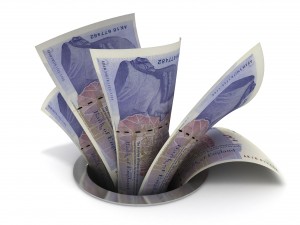Why Most CRM Systems Don’t Work…
In both our pricing and our sales effectiveness work we find most clients we visit have invested in some sort of CRM system. There are lots of them about and in the main they are all pretty good products. However, time and time again we see them not fulfilling their potential to help salespeople grow the business.
The problem is always the same; the moment senior management decide to spend the money on the system they start salivating at an opportunity to see what the sales team is actually doing… and better still measure it. After all what gets measured gets done doesn’t it?
Everyone in the office always wonders what those flash gits actually do for their over-generous salaries… now is the chance to hold their feet to the fire!
The CFO is ecstatic… with the sales pipeline in a nice piece of interrogatable software, forecasting is going to be a breeze from now on.
…But somehow it doesn’t all work out as planned.
There is an underlying problem. The CRM system will deliver numbers for you… nice crisp numbers often to two decimal places… but this is not data. It is actually an amalgamation of a bunch of extroverts’ opinions, wishful thinking and exaggerations expressed in numerical form.
Assessing the Sales Pipeline from CRM
The most popular form of sales pipeline before the days of CRM was a spreadsheet hastily prepared the night before a sales meeting. If all you do when you set up CRM is to type this in then you will get what you deserve… a bunch of three year old ‘opportunities’ that are never going to land in a month of Sundays.
Forecasting from CRM
If your sales pipeline is made up of fairly hefty chunks of business… big contracts or new customers… then let’s consider just three of the inputs the salesperson is required to put into the system:
The Value of the Deal – Is the customer really going to tell you how much they spend already before they have seen your quote? If so, might they exaggerate how much they spend in order to make you price more keenly? Do they know how much of your product they are going to be able to sell on to their customers before they have tried it? We would suggest that until you are well into the sales process and have done some proper discovery, you can’t tell what it is worth…partly because you haven’t properly set the price.
The Likelihood of Winning – Sometimes the system applies this. Otherwise it is a measure of the caffeine intake of the salesperson in the 90 minutes prior updating the system.
The Expected Close Date – If you have a sales cycle that typically takes more than 30 days, this is a nonsense field unless it is filled in the day after the order is received. If it is a big opportunity and it slips over a month end… or worse still a year-end… there goes your phased forecast to hell in a hand-cart.
So what do you need to do to make it work properly?
Firstly.. stop the management looking at it…. at least for a while. So long as the sales team know they are being watched, they will tell you what they think you want to hear (remember: they are good at this… that’s why you hired them). We recommend when first implementing CRM, the CEO and CFO should not get a sign-on for at least six months.
Secondly… make it an indispensable tool for the sales person. A friend and great salesman Tony Dimech says CRM stands for ‘Can’t Remember Much’. A good salesperson might be juggling between 15 and 40 opportunities, they can’t possibly remember who said what to whom and when. CRM when used properly reminds the salesperson who to nag today to bring more business closer to landing in the order book.
It should be set up with the salesperson in mind and worry about the management information later:
Field of View – It should immediately present their pipeline and suggest what they can be doing next on its first screen
Available – If they are out in the field, it needs to be mobile. They should want to look at it several times a day. I update mine when I walk out of the client’s office after a meeting.
Synchronised – Pretty much all of a salesperson’s correspondence diary dates and contact details should live in CRM, or at least by synced with outlook/google.
A well designed CRM system puts pace into sales. It makes its users more successful. It stops opportunities slipping through the grating. When it is working well, it is a selling tool and not a tool for management.
IT SHOULD BE A SATNAV NOT A TACHOGRAPH
If the salespeople come to rely on it as their primary information source, then the information they put in will be accurate and the data coming out the back will be reliable. It doesn’t work the other way round.
Footnote: At Burgin Associates we use Pipedrive. Nobody looks over my shoulder at the data as I am the boss. But I wouldn’t be without it as I know it helps me bring in business. Clients will know that I refer to it as my ‘Nag List’ …once you get on my Nag List, you never get off until you place some work with us or appear in the obituaries column!!
We undertake quite a lot of sales effectiveness work for clients and are pretty good at getting CRM humming.

